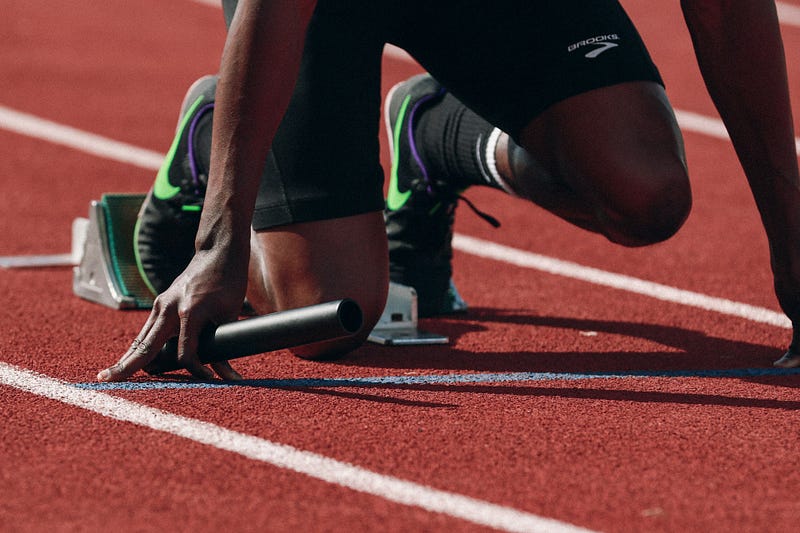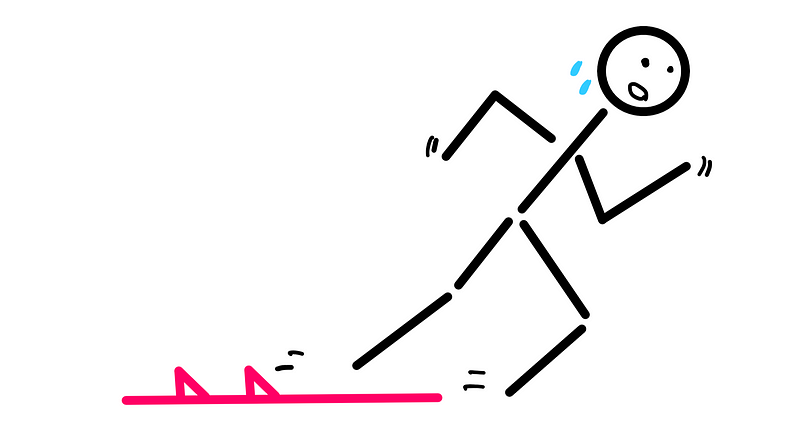The Science Behind the 100-Metre Sprint: A Technical Exploration
Written on
Chapter 1: My Journey with Running
Running has always held a special place in my heart. Although I was never particularly skilled at it, my passion never faded. In my teenage years, when I was seeking a way to improve my fitness, running emerged as the ideal solution. It required minimal investment—just a good pair of shoes, my time, and effort. Unlike team sports that necessitate coordination with others or booking facilities, running allowed me to lace up my shoes and hit the ground whenever I wanted. This habit has persisted and matured with me over the years.
Years later, I began training for mid to long-distance events. Unfortunately, a significant injury interrupted my progress, and I am still on the mend. Nevertheless, my love for running remains intact; I am grateful for the ability to run whenever the mood strikes me. It serves as a form of meditation, helping me organize my thoughts. Interestingly, I often find myself drafting ideas mentally during my runs.
Reflecting on my training period, I developed a particular fondness for the 100-metre sprint. While many argue that the 400-metre race is significantly more challenging, I believe the 100-metre sprint is the ultimate sporting event. This notion is not solely based on difficulty; rather, the 100-metre sprint is often one of the first athletic experiences for children, whether in a casual neighborhood race or an official school competition. Its straightforward rules and direct nature make it universally understood: runners line up, sprint straight ahead, and the first to cross the finish line is declared the winner—it's as basic as it gets!
With the Paris 2024 Olympic Games currently underway, I find myself captivated by the thrilling races and the evolution of this sport. The technical aspects of the 100-metre sprint have become increasingly sophisticated over time, which has inspired me to delve into a technical analysis of this event, as well as the significant historical shifts it has undergone.
Chapter 2: Understanding the Rules of the Game
The race begins with three key commands for the athletes. The first, "On your marks!" signals them to approach their starting blocks. The second command, "Set!", instructs them to take their pre-race stance. This position is critical as it involves an isometric preload—a static muscular engagement that optimizes their explosive start.

This is akin to how we prepare to rise from a crouched position: we push our upper body up while pushing down with our bent legs. In sprinting, achieving the optimal position for a powerful thrust forward is referred to as an isometric preload.
The race officially starts with the sound of a gunshot fired by an official. Upon hearing this signal, the runners launch forward.
Typically, the 100-metre sprint occurs along the home straight of a 400-metre track. Each athlete is assigned a specific lane and must remain within those boundaries; straying into another runner's lane could result in disqualification.
Once the race begins, the runner who crosses the finish line first is declared the winner. Although these rules seem straightforward, the competitive nature of the sport has led to numerous subtle refinements over the years.
Section 2.1: The Evolution of Timing and Rules
Until 1977, races were manually timed, with an accuracy of one-tenth of a second assessed by three officials. Runners could anticipate the start by guessing when the gun would fire. The introduction of automated timing changed this dynamic significantly.
Currently, if a reaction time of less than 0.1 seconds is recorded, it is classified as a "false start." Officials take into account the time it takes for the sound of the gun to reach the athletes, as well as the time they need to react. This is accomplished using sensors in both the starting gun and the blocks.
During my childhood, runners were allowed two false starts before facing disqualification, leading to extended and often tedious starts. However, in 2003, the International Association of Athletics Federations (IAAF) revised this rule, allowing only one false start for the entire field. Consequently, the second false start, even if committed by a different runner, would lead to disqualification.
This change introduced strategic elements, as athletes would sometimes attempt a false start to gain a psychological edge over quicker starters. In 2010, the IAAF further amended the rules, stating that any false starter would be disqualified immediately, a decision that sparked controversy, especially when world record holder Usain Bolt was disqualified in the 2011 World Championships.
In addition to these changes, environmental factors also come into play. The altitude affects sprint times; thinner air at higher elevations offers less resistance. Any sprint time recorded at least 1000 metres above sea level is marked with an “A” for this reason.
Moreover, headwinds impede runners, while tailwinds can assist. However, if a tailwind exceeds 2.0 metres/second, the sprint time becomes ineligible for official records, requiring conditions to remain "wind-legal."
Chapter 3: Breaking the 10-Second Barrier
In the 2024 Olympic final for the 100-metre sprint, all eight finalists completed the race in under 10 seconds. While this may seem commonplace, it is, in fact, quite rare. Fewer than 200 individuals have achieved this feat, and no female athlete or anyone under 18 has ever managed to run the distance in less than 10 seconds.
To put this into perspective, there are more astronauts than there are sub-10-second sprinters—by a factor of over three! The number of Nobel Prize winners also surpasses that of these elite sprinters by five times.
These athletes are exceptionally rare. In 1968, during the US Championships, three runners clocked sub-10-second times, although manual timing was also used, which led to discrepancies. Later that same year, Jim Hines achieved an official sub-10-second time (9.9 seconds) at the Summer Olympics, as measured by automated timing.
Another decade passed before another athlete ran a sub-10-second 100 metres, yet Hines' record remained unbroken for an astonishing 20 years, underscoring the difficulty of this achievement.
As time progressed, however, the number of athletes breaking the sub-10-second barrier has grown, with Usain Bolt currently holding the world record of 9.58 seconds set in 2009—a record that has endured for 15 years.
The first video titled "Do you know all the phases of the 100m? | Sprinting 101" provides a detailed breakdown of the different phases involved in a 100-metre sprint, illustrating the mechanics and techniques that sprinters utilize to achieve their best times.
Chapter 4: Looking Ahead in the World of Sprinting
The data clearly indicates a trend of increasing speed among sprinters over time, as evidenced by the growing number of athletes who have completed the 100 metres in under 10 seconds. Notably, Justin Gatlin maintained this elite level of performance for 18 years.
In 2016, Kim Collins made history by becoming the first person to run a sub-10-second 100 metres at the age of 40 (with a time of 9.93 seconds). It is significant to mention that Collins won the gold medal in 2003, 13 years prior to his personal best, with a time of 10.07 seconds.
The rise in elite performances can be attributed to the democratization of training knowledge. In the past, high-level training techniques were closely guarded secrets. Now, anyone with determination and discipline can access this information and pursue their own athletic goals.

Additionally, advancements in technology—such as improved track surfaces and responsive shoe materials like carbon fiber—have played a crucial role in enhancing athlete performance.
These factors make Jim Hines’ achievement even more remarkable; when he broke the 10-second barrier, he did so on a non-synthetic cinder/dirt track at sea level.
I appreciate your time in reading this exploration and hope it has provided you with fresh insights into the fascinating world of sprinting.
The second video titled "The History of 100m World Records | Progression to 9.58" traces the evolution of world records in the 100-metre sprint, highlighting the athletes who have shaped the event's history.
A MAP of almost ALL of my work till date. Enjoy!
References and credit: Worldathletics, alltime-athletics, and Outperform.